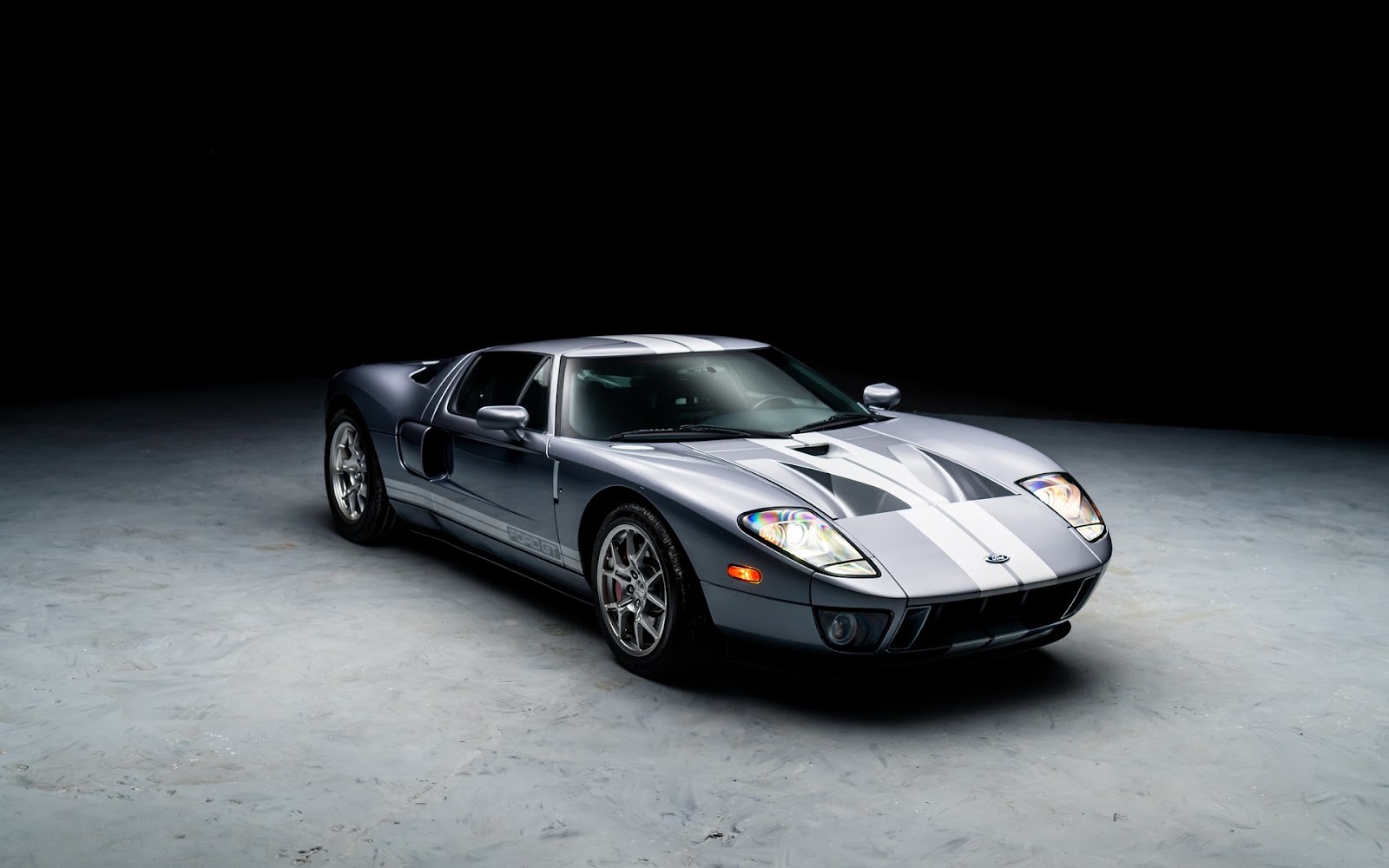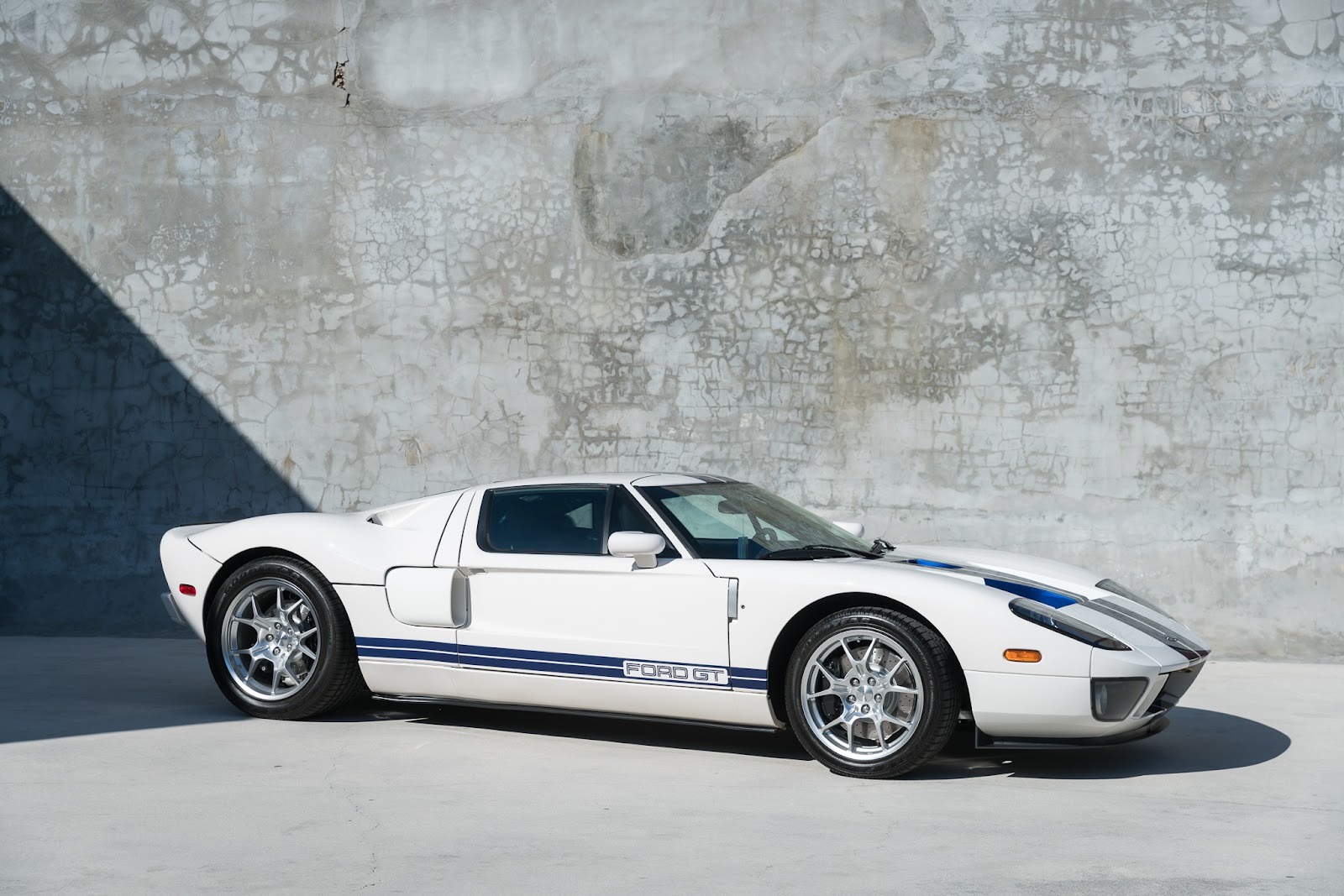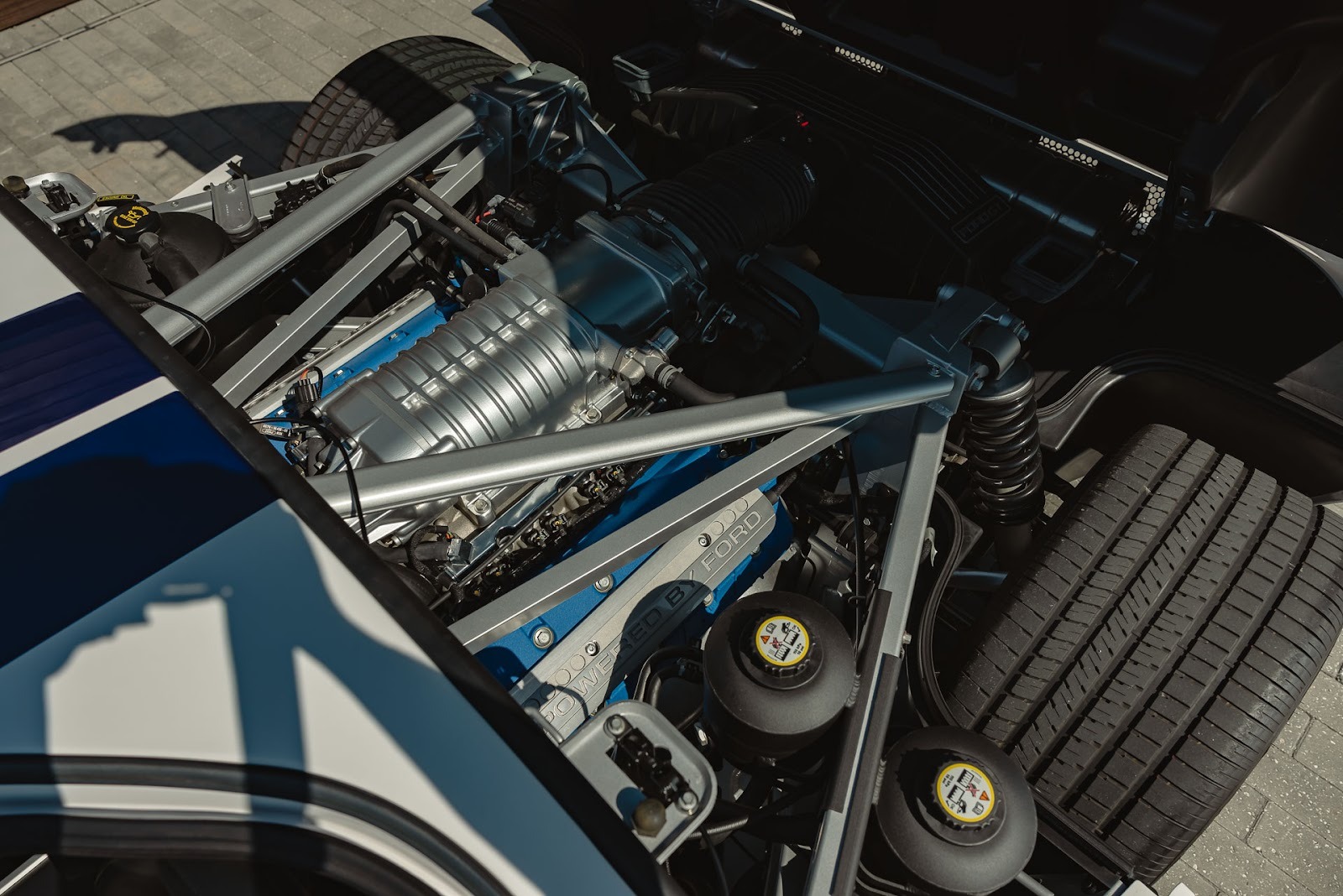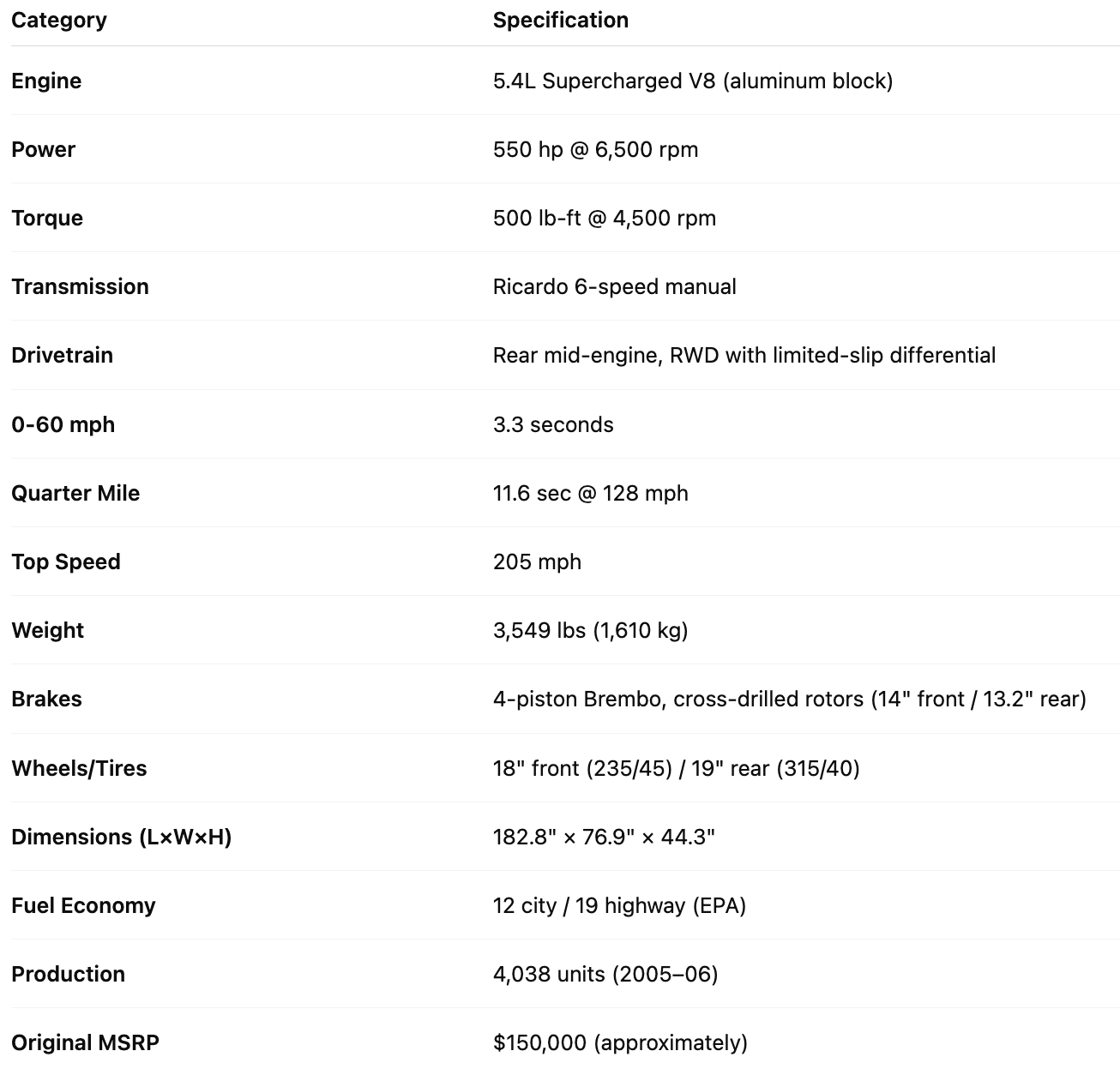What Makes the 2005 Ford GT a Collector Sweet Spot
Explore what makes the 2005 Ford GT a rising star in the collector car world. From design to value, here’s why it still turns heads.

In 2005, Ford made an audacious decision. Ford built a supercar with a manual transmission, no traction control, and a roofline so low you practically sit on the ground. Breaking lap records or winning races was not the focus for the Ford GT. Ford had already settled that score with Ferrari several decades earlier. This car exemplified what happens when a major manufacturer creates something solely for the love of performance.
Only 4,038 examples rolled off production lines over two model years (2005-2006). Today, these cars command prices much higher than their original sticker, and the gap keeps widening.
This is the story of why a car designed for Ford's centennial has become one of the most sought-after American supercars ever built.
The Road to Revival

The genesis of the modern GT can be traced back to 1999, when designer Camilo Pardo began sketching what would eventually become the GT40 concept. Working in Ford's Living Legends studio under J. Mays, Pardo faced a peculiar challenge: honor one of motorsport's most iconic silhouettes without creating a costume party on wheels. Carroll Shelby, the original architect of Ford's Le Mans assault, joined as a consultant to ensure that the car would look and drive right.
The concept was introduced at the 2002 North American International Auto Show and received a thunderous response. Within six weeks, Bill Ford Jr. announced production plans. Ford's centennial was approaching, and the company needed a halo car that would remind people of what the Blue Oval could achieve when constraints were removed.
Here's where it gets interesting. A British company called Safir Engineering owned the "GT40" trademark from building continuation cars in the 1980s. When Ford approached them about licensing the name for production, negotiations collapsed over a $40 million asking price. The solution? Drop the "40" entirely. The production car would be called simply the Ford GT.
Dimensionally, this naming quirk makes sense. The original GT40 earned its name because it was 40 inches tall. The modern GT is 44.3 inches tall, which means it is truly livable. You don't need to contort yourself to get in. The larger dimensions (182.8 inches long and 76.9 inches wide) created space for modern safety equipment and a chassis that could handle 550 horsepower without scaring drivers into early retirement.
The new car’s production happened across multiple specialized facilities. Mayflower Vehicle Systems in Norwalk, Ohio handled initial assembly. Saleen Special Vehicles in Troy, Michigan took over paint and continued assembly. The engine came from Ford's Romeo Engine Plant. Final installation of drivetrain and interior finishing occurred at Ford's SVT building in Wixom, Michigan. This decentralized approach reflected the car's bespoke nature. There was no existing assembly line that could accommodate it at the time.
Styling That Nails It

Stand next to a 2005 GT today, and the design still feels contemporary. Retro-inspired cars from the early 2000s, like Thunderbird, SSR, and PT Cruiser, aged like milk. The GT aged like bourbon. Twenty years later, it looks purposeful rather than nostalgic.
Pardo's genius was understanding which elements defined the GT40's visual DNA. The overall shape communicates instantly: low nose, pronounced fenders, that distinctive roofline flowing into rear buttresses. But examine the details, and you'll find thoughtful modernization throughout.
The headlights feature an Easter egg that most owners only discover after someone points it out. The left cluster spells '100' when illuminated, a nod to Ford's centennial. On the right side, the pattern reverses so that it reads correctly in a rearview mirror. These are not LED units or HID projectors, but rather projector beam housings that get the job done.

The design of the roof-integrated doors comes straight from the original GT40, where engineers needed drivers to enter and exit quickly during endurance races. Modern parking lots pose challenges due to the need for significant clearance on the driver's side. But the act of opening the clamshell becomes addictive. There's a theatrical element to the way the roof lifts with the door, exposing the cabin like a treasure chest.
NACA ducts are scattered throughout the bodywork, with each one being functional rather than decorative. The large duct on the hood feeds cool air to the engine. Airflow is directed to the rear-mounted radiators through the side scoops. The fender vents prior to the doors are not just for aesthetics – they remove heat from the heat exchangers located in the front.
The factory offered four options. Racing stripes (painted, not vinyl decals) added $3,000. BBS forged wheels brought another $4,000. Painted brake calipers cost $900. The McIntosh audio system added $2,500. That's it. No sport packages, no technology bundles, no dealer-installed accessories. You could option your GT in about thirty seconds.
Then there's the Heritage Edition: 343 cars wearing the Gulf Oil livery that adorned the GT40s that won Le Mans in 1968 and 1969. That blue-and-orange combination has become automotive royalty, instantly recognizable even to casual observers. Heritage cars command significant premiums today, but every GT benefits from Ford's restraint. The limited option list means even base models feel complete rather than stripped.
Built to Be Driven
When you open the GT's rear clamshell, you'll be greeted with 5.4 liters of supercharged aluminum power. The architecture of this Ford Modular V8 is similar to that of engines found in trucks and SUVs. But don’t call it “truck engine” as you will miss the point.

Ford's engineers started with an aluminum block designed specifically for the GT. Forged internals replaced cast pieces. The custom camshafts delivered more lift and duration than even the Shelby GT500's. An Eaton Lysholm screw-type supercharger sat atop the assembly, force-feeding 550 horsepower at 6,500 rpm and 500 lb-ft of torque at 4,500 rpm. A dry-sump oil system allowed the engine to sit low in the frame, keeping the center of gravity where it belonged.
The core specifications reveal what Ford achieved with the GT:

The Ricardo six-speed manual transmission remains one of the GT's defining characteristics. Ricardo, a British engineering firm known for motorsport gearboxes, delivered a unit with longer throws than contemporary Italian supercars, but still mechanically satisfying. Slot it into gear, and you will feel the helical limited-slip differential waiting in the transaxle.
Performance numbers tell part of the story: 0-60 mph in 3.3 seconds, quarter-mile in 11.6 seconds at 128 mph, top speed of 205 mph. But GT is not about raw acceleration only! The power delivery is linear, not explosive. The supercharger whine builds gradually as revs climb. This car doesn't suddenly surge or transition from manageable to terrifying.
Braking hardware sounds modest by modern standards: four-piston Brembo calipers squeezing cross-drilled rotors measuring 14 inches up front and 13.2 in the rear. No carbon ceramics, no elaborate cooling ducts. Yet owners consistently praise the brake feel for its intuitive modulation and adequate stopping power. Also, this car weighs just 3,549 pounds, so you don't need huge rotors to manage that mass.
The suspension geometry came from racing, but tuning aimed for road use. Double wishbones at all four corners provided proper camber control, though some early reviews criticized the ride as too stiff for public roads. Time has been kinder to this setup. Compared to modern track-focused supercars, the GT feels compliant, never punishing you over expansion joints or transmitting every pebble through the chassis.
Here's what matters most: the GT includes air conditioning, a stereo (if equipped), and enough interior space that six-footers fit well. Ford understood that analog doesn't mean uncomfortable. This car can be driven for hours easily.
Real-World Reactions

GT owners all have the same opinion - these cars are reliable. The Ford service network can handle them as parts are largely available. The engine doesn't require major servicing every few years. We have also seen several examples that crossed 50,000 miles without significant issues.
The driving experience is also unique. The whine from the supercharger can become addictive - some owners claim that they accelerate deliberately just to hear it. When it comes to visibility, it's surprisingly good. Although the A-pillars are close and the greenhouse is low, it provides better sightlines than you would expect from a low-slung structure.
The manual transmission is about engagement; there are no paddle shifters or auto mode. It's your responsibility to take care of every gear change. Compared to most modern performance clutches, the clutch pedal is lighter and has a distinct bite point that makes smooth takeoffs simple even in traffic.
Today, collectors consistently express surprise at how special the GT feels. The engine note, the seating position, and the mechanical feedback through the steering all conspire to make you feel connected to the car's behavior. Without electronic systems filtering information, your hands and seat are the sole way to feel what the tires are doing.
If you compare the GT to modern supercars, you will experience a stark difference. Current exotics arrive loaded with stability systems, torque vectoring, and active aerodynamics. They are faster, more capable, and easier to drive near the limit. But they're also more isolated. The GT presents something unique: it requires you to work for your enjoyment. And that friction creates connection with the car.
Investment Trajectory
When the Ford GT first arrived in dealerships, its MSRP was about $140,000 USD, often rising to $150,000 when including optional equipment and destination. Early models frequently sold for a premium over the MSRP, sometimes significantly above $150,000, with some early cars trading up to $100,000 above the sticker price. Then came 2008. The financial crisis hammered exotic car values across the board. But the GT weathered the storm with minimal depreciation: its values dropped slightly, then stabilized.
The real appreciation started around 2015. Over the following five years, Heritage Edition examples in Concours condition increased 57 percent. Even though the recent quarters have seen some softening (several percentage points), the long-term trajectory continues upward.
Several factors drive value. The importance of factory options is greater than you might think given their original modest cost. Mileage creates even larger deltas. Low mileage examples often command significant premiums. 'Wrapper' cars, those with delivery mileage, occupy the top tier. Yet, there is evidence that extremely low mileage may not matter as much moving forward. Buyers increasingly want GT cars they can drive, rather than museum pieces.
An interesting comparison has emerged with the second-generation GT that launched in 2017. The highest sale price for a first-generation car is relatively close to the lowest sale price of a second-generation GT. That gap continues to narrow. First-generation cars offer something the newer model can't match: a loud V8 soundtrack and pure analog feedback. Although the newer car is faster, more advanced, and exotic, the older car still has a more visceral appeal.
Who's Buying?

The younger car enthusiasts are noticing the appeal of the first-generation GT. Over the past years, quote requests from 30-49 year-olds have increased six percentage points to nearly 20 percent of market activity. Quote requests from 18-29 year-olds have quadrupled over the same period.
How come? Young enthusiasts who grew up playing Forza and Gran Turismo are reaching positions where GT ownership is becoming possible. Manual transmissions or the absence of electronic aids do not discourage them. If anything, those characteristics attract them.
This car also connects generations, but in its unique way. Older buyers remember when the GT was new, when analog supercars were normal rather than exceptional. Younger buyers experience the GT as a gateway to what driving used to feel like before computers took over. Both groups appreciate the same qualities, just from different perspectives.
GTs get driven! They're not common, but they appear at Cars and Coffee events, track days, and weekend drives. According to owners, the GT consistently generates more public reaction than more exotic brands costing twice as much. Four thousand units built create genuine rarity without being so limited that no one ever sees them.
The 2005 Ford GT in Context

Let’s travel back in time for a minute. 2005 was a remarkable year for performance cars. At the supercar level, Ferrari offered the Challenge Stradale, a stripped, sharpened 360 delivering racing intensity in road-car form. Porsche's 996 GT3 was establishing the template for track-focused 911s.
When Car and Driver tested the GT against a 2004 Ferrari Challenge Stradale and 2004 Porsche 911 GT3, the result was decisive. Larry Webster wrote: "It wasn't even a contest. The Ford GT so completely dusted off its two highly recognized competitors that if we had wanted to make this a real challenge, we would have had to go way up the 'supercar' price ladder."
That comparison reveals something outstanding about the GT's character. While the Ferrari was sharper, more exotic, and the Porsche was more refined and better balanced, the GT delivered more immediate physical impact. It felt more mechanical, more raw. The supercharger whine, the V8 rumble, the heft of that Ricardo transmission created an experience the European cars couldn't match.
Although Ford never officially entered the GT in factory racing, privateer teams showcased its competitive prowess. These cars raced in prestigious events like the 12 Hours of Sebring and various European endurance championships, where they performed strongly and won occasionally in their classes. This success validated the GT’s engineering and racing capability.
All in all, the GT carved out a unique territory: American muscle wrapped in supercar bodywork, equally comfortable on track days and weekend drives. The goal was not to emulate Ferrari or Porsche, but rather to create a distinct American identity, and it achieved it with complete success.
Final Thoughts
The 2005 Ford GT is in a unique position that cannot be replicated anymore. Modern safety regulations, emissions requirements, and market expectations make it impossible to produce analog supercars. Even if Ford wanted to build something similar today, they couldn't. The regulatory environment has moved on.
That makes the GT's original production window more significant. It represents the last moment when a major manufacturer could greenlight a project this focused. No stability control, no paddle shifters, no hybrid system, no infotainment demands. Just a supercharged V8, a manual transmission, and bodywork that makes you stop and stare.
It’s true that the car's value has increased over the last decade, but its appreciation misses the larger point. The GT represents something more than an investment opportunity. This captures a unique moment in automotive history -- when computers had not yet taken over, when analog feedback was standard, and when connecting between the driver and the machine was not a nostalgic luxury. Drive one, and you'll understand what's been lost in the pursuit of lap times and safety ratings.
Twenty years after its introduction, the Ford GT has settled into its role as one of America's finest automotive achievements. It proved that domestic manufacturers could build genuine supercars without compromising their identity.
About Curated
The 2005-06 Ford GT represents exactly the type of supercar from the analog era that Curated was established to preserve.
Whether you're considering purchasing a GT, need guidance on selecting qualified specialists familiar with these cars, or want to ensure your GT is preserved and enjoyed as intended, our goal is to help enthusiasts like yourself maximize their ownership experience while protecting the Ford GT's significant place in automotive history.














.webp)
